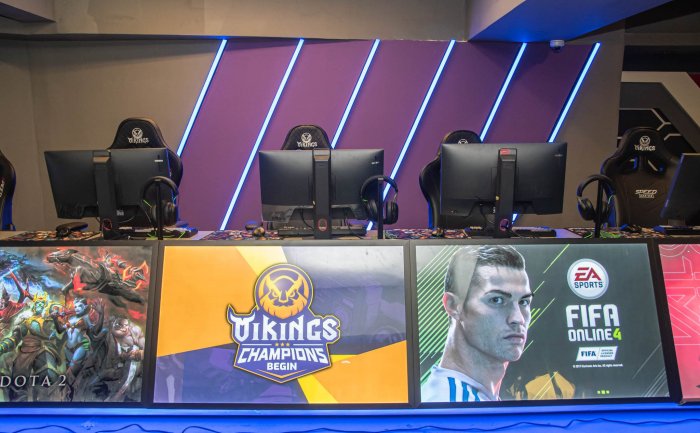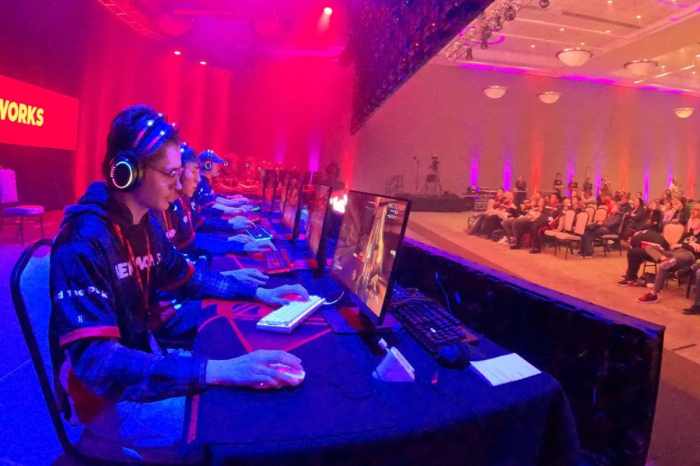
Esports team sponsorship deals have become a game-changer in the world of competitive gaming, transforming how teams operate and thrive in this vibrant industry. With major brands and innovative strategies joining forces with talented players and teams, the landscape of esports is rapidly evolving, creating endless opportunities for growth and engagement.
In this discussion, we will explore the significance of these sponsorship deals, the various types available, and the dynamic ways they impact team performance and overall revenue. By examining successful case studies and current trends, we will uncover the fascinating interplay between esports and corporate sponsorships.
Overview of Esports Team Sponsorship Deals
Sponsorship deals play a crucial role in the growth and sustainability of esports teams, providing them with the financial resources needed to operate at a competitive level. These collaborations go beyond mere financial transactions; they enhance brand visibility and create a robust ecosystem that benefits all parties involved.A few successful examples include Team Liquid’s partnership with Alienware, which has provided high-quality gaming equipment to enhance player performance, and Cloud9’s sponsorship deal with Red Bull, which has helped the team expand its reach and engage with a broader audience.
The impact of such deals is significant, as they not only boost revenue but also improve team performance by allowing teams to invest in training, facilities, and talent acquisition.
Types of Sponsorships in Esports
There are various types of sponsorships available for esports teams, each with its unique benefits and drawbacks. Understanding these can help teams make informed decisions about potential partnerships.
- Title Sponsorship: This is a comprehensive deal where a brand becomes the primary sponsor and often receives naming rights. It usually comes with substantial financial support, but it can limit the team’s ability to partner with other brands.
- Equipment Sponsorship: Brands provide teams with hardware and software, enhancing performance and gameplay. While this is beneficial, teams may have less control over the equipment they use.
- Merchandising Sponsorship: Teams collaborate with brands to create co-branded merchandise. This can increase revenue, but managing quality and brand alignment can be challenging.
- Media Sponsorship: Involves brands sponsoring broadcasts or streams, enhancing their visibility. However, the return on investment can be unpredictable based on viewership metrics.
Sponsorship types can vary significantly across different games and platforms, reflecting the unique dynamics of each gaming community.
Major Brands Involved in Esports Sponsorship
Numerous key brands are currently sponsoring esports teams, leveraging this rapidly growing sector to enhance their marketing strategies. Brands like Intel, Coca-Cola, and Nike are notable examples that have made significant investments in esports.These companies employ various marketing strategies, such as cross-promotions, influencer partnerships, and event sponsorships. For example, Intel has integrated its brand into major esports tournaments, ensuring high visibility among gaming audiences.
Such partnerships enhance audience engagement, as fans often resonate more with brands that support their favorite teams and players.
The Role of Online Games in Esports Sponsorships
Popular online games significantly contribute to sponsorship opportunities in esports. Games like Fortnite, League of Legends, and Valorant attract a large player base, making them appealing platforms for brands looking to engage with younger audiences.Sponsorship dynamics can also differ within niche demographics, such as online games targeted at girls and kids. For instance, games like Animal Crossing have shown that family-friendly content can also draw sponsorship interest.
Notable examples include collaborations between gaming franchises and children’s toy brands, which integrate sponsorship elements seamlessly into gameplay, enhancing brand visibility without alienating the audience.
Trends in Esports Sponsorships

The esports sponsorship landscape is evolving, influenced by current trends shaping the industry. One prominent trend is the increasing role of social media and streaming platforms, which have become vital for sponsorship visibility. Brands are leveraging platforms like Twitch and YouTube to reach audiences directly, often through exclusive content and sponsored streams.Future trends could include the rise of virtual reality (VR) events and immersive experiences, offering new ways for brands to engage with players.
As esports continue to grow, it’s likely that sponsorship deals will become more innovative, targeting diverse demographics with tailored marketing strategies.
Financial Implications of Sponsorship Deals
Sponsorship deals significantly impact esports team finances. These agreements often provide teams with a steady revenue stream, which is crucial for operational success. Compared to other income sources, such as tournament winnings or merchandise sales, sponsorship revenue can be more predictable and substantial.However, the return on investment for brands in esports sponsorships can vary. Brands must evaluate metrics such as audience engagement, brand recall, and sales conversions to assess the effectiveness of their sponsorships and ensure they are getting value for their investment.
Online Games Popular Among Various Demographics

A diverse array of online games appeals to different demographics, including girls, kids, and general audiences. Some popular titles include:
- Among Us: Favored by younger audiences for its social deduction gameplay.
- Minecraft: A versatile platform that attracts children and creative players alike.
- Fortnite: Popular among teens, known for its vibrant graphics and competitive gameplay.
These games often attract sponsorships due to their large player bases and engagement levels. Some have even integrated sponsorship elements into their gameplay, such as branded skins or in-game events that resonate with their audiences.
Case Studies of Successful Sponsorships
Several case studies illustrate the success of esports sponsorships, showcasing effective strategies from both teams and brands. One notable example is the partnership between G2 Esports and BMW, which has led to unique co-branded content and merchandise. This collaboration has not only bolstered G2’s brand but also positioned BMW as a key player in the esports space.The strategies used in these cases often involve joint marketing campaigns that highlight shared values and community engagement, benefiting both parties.
The long-term effects include enhanced brand loyalty and increased visibility within the esports community.
Challenges in Securing Sponsorships for Esports Teams
Esports teams face several common challenges when securing sponsorship deals. These include the saturated market, where many teams are vying for attention, and the need to demonstrate return on investment to potential sponsors.To overcome these obstacles, teams can focus on building a strong brand presence and engaging actively with their audience. Successful teams often leverage unique content, community engagement, and data analytics to attract sponsors.
Real-life examples show that teams like FaZe Clan have navigated these challenges by cultivating a dedicated fan base and showcasing their influence in the esports landscape.
The Future of Esports Sponsorships
The future of esports sponsorships looks promising, with potential for evolution driven by emerging markets and demographics. Brands are increasingly exploring opportunities in regions with growing gaming populations, such as Southeast Asia and Latin America.Technological advancements, such as augmented reality (AR) and enhanced streaming capabilities, may also shape how sponsorships are structured. These innovations could open new avenues for audience engagement, making sponsorships more interactive and immersive in the years to come.
Concluding Remarks
As we wrap up our exploration of esports team sponsorship deals, it’s clear that these partnerships are not just beneficial for teams but also for brands looking to enhance their visibility and connection with audiences. The future of esports sponsorships holds exciting potential, driven by technological advancements and the emerging demographics of gamers. Together, they will continue to shape the landscape of esports, making it an ever-evolving arena of opportunity.
Commonly Asked Questions
What are the primary benefits of esports sponsorships?
Esports sponsorships provide teams with financial support, enhance brand visibility, and create opportunities for fan engagement through unique marketing strategies.
How do sponsorship deals impact a team’s performance?
Securing sponsorships can lead to improved resources for training, better equipment, and increased exposure, all of which contribute to enhanced team performance.
What challenges do esports teams face in securing sponsorships?
Common challenges include competition for sponsorships, understanding brand alignment, and demonstrating value to potential sponsors.
Can smaller esports teams attract sponsorship deals?
Yes, smaller teams can attract sponsorships by focusing on niche markets, building strong community engagement, and presenting unique value propositions to brands.
What trends are shaping the future of esports sponsorships?
Current trends include increased investment from traditional brands, a focus on diversity and inclusion, and leveraging streaming platforms for enhanced visibility.




